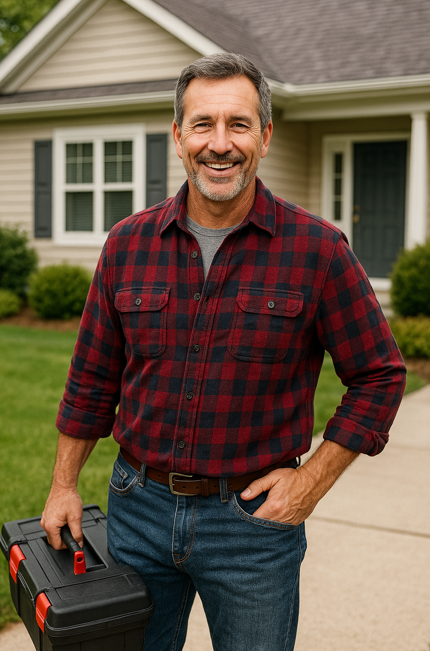Introduction
Hey, Mike Sanders here. If you’re shopping for a new gas furnace, you probably noticed the wide price range—from budget models to high-efficiency R-32 systems that promise to save you money on fuel. But what does it really cost to own a gas furnace?
When most people think about cost, they only consider the upfront price tag. But the truth is, a furnace comes with many expenses over its lifetime—installation fees, regular maintenance, repairs, energy bills, and eventually replacement.
In this post, I’m going to break down the full picture of gas furnace costs, so you can budget smarter and pick the system that fits your home and wallet for years to come.
1. Upfront Cost: What You Pay at Purchase
The Furnace Unit Price
Gas furnaces vary widely in price based on size, efficiency rating, and brand. On average:
-
Basic models: $700 to $1,200
-
Mid-range, higher efficiency (AFUE 80-90%): $1,200 to $2,500
-
High-efficiency R-32 models (AFUE 90-98%): $2,500 to $5,000+
The latest R-32 gas furnace systems often carry a premium due to their advanced refrigerant technology and eco-friendly design. While they cost more upfront, their superior efficiency means you pay less on heating bills over time.
Installation Costs
Installing a gas furnace isn’t just plug-and-play. Professional installation typically runs between $1,500 and $3,500 depending on complexity, location, and additional work required (like ductwork or venting upgrades).
Keep in mind that poor installation can void warranties and reduce efficiency, so skimping here is not a good idea.
🔧 Pro Tip: Look for licensed HVAC contractors who are experienced with R-32 systems to ensure proper setup.
2. Lifetime Costs: How Much Will It Cost Over the Years?
Fuel Costs
Your gas furnace’s efficiency rating (AFUE) directly impacts your monthly fuel bills. A higher AFUE means more heat from every unit of natural gas burned, reducing waste and saving money.
According to the U.S. Department of Energy, switching from an older furnace with an AFUE of 65% to a modern 95% efficient model can cut heating costs by up to 30%.
Calculate your estimated fuel costs using this calculator from the U.S. Energy Information Administration (EIA) to get a clearer picture.
Maintenance & Repair
Regular maintenance keeps your furnace running efficiently and extends its life. Annual tune-ups typically cost between $100 and $200.
Over 15–20 years, you might spend around $1,500 to $3,000 on maintenance and minor repairs.
💡 Pro Tip: Sign up for a maintenance plan with your HVAC provider to save on service calls and priority scheduling.
Expected Lifespan
A well-maintained gas furnace can last 15 to 20 years, but this depends heavily on how well it’s cared for. Cutting corners on maintenance or ignoring repair signs can shorten this lifespan, increasing the total cost per year.
3. Additional Costs to Consider
Ductwork & Ventilation
If your home’s ductwork is old or leaky, you might need repairs or replacement during furnace installation. This can add $1,000 to $3,000 to your total project cost.
Also, venting must meet safety codes—improper ventilation can lead to dangerous carbon monoxide buildup.
Thermostat & Controls
Modern gas furnace systems often pair with smart thermostats, which help optimize heating schedules and reduce waste.
A good smart thermostat costs between $100 and $300, but the energy savings typically justify this expense quickly.
Learn more about the benefits of smart controls on the ENERGY STAR Smart Thermostat page.
4. Comparing Gas Furnace Costs to Alternatives
Thinking about alternatives? Heat pumps, electric furnaces, or propane systems may have different upfront and operating costs.
For an in-depth comparison, check out Modernize’s Heating System Cost Guide, which breaks down typical prices, pros, and cons.
5. How to Save Money on Your Furnace Purchase
-
Look for Rebates & Incentives: Many states and utility companies offer rebates on high-efficiency gas furnaces. Check the Database of State Incentives for Renewables & Efficiency (DSIRE) to find programs near you.
-
Choose the Right Size: Oversized furnaces waste energy and cost more upfront. Use a professional sizing calculation (Manual J) for best results.
-
Maintenance Plans: Investing early in annual tune-ups avoids costly breakdowns.
-
Buy from Trusted Dealers: Reliable dealers offer better warranties and installation quality.
Final Thoughts from Mike
Buying a gas furnace isn’t just about the upfront price. When you factor in installation, fuel use, maintenance, and lifespan, the true cost becomes much clearer.
High-efficiency R-32 furnaces may cost more initially, but they often save you hundreds annually on energy bills and are better for the environment.
If you want to explore efficient R-32 gas furnace systems, check out our complete collection here.
Remember, a good furnace is an investment in your home’s comfort and your peace of mind. If you’re ready to get started or have questions, just reach out. I’m here to help every step of the way.
Stay warm,
—Mike Sanders







